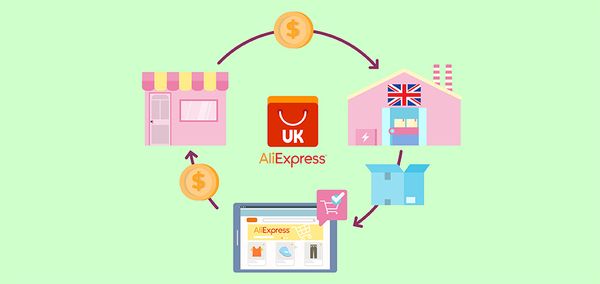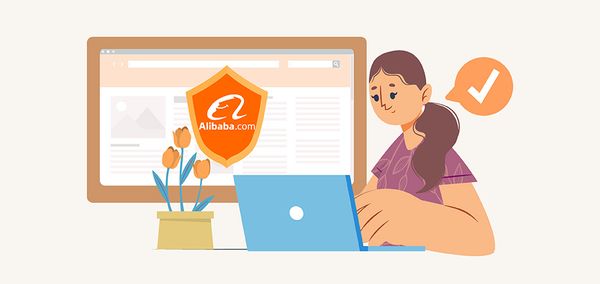What Is a Privacy Policy and How to Write One

A Privacy Policy is required if your website or mobile app gathers personal data from its users. In many nations, a privacy policy is required by law.
What is a privacy policy, and what are the legal standards that regulate them? What is the best way to write a Privacy Policy? Let's have a look.
What Is Privacy Policy
The following is how BusinessDictionary.com describes a Privacy Policy:
“When it comes to collecting and releasing visitors' personal information, a policy statement is necessary. It normally specifies what information is gathered and whether it is kept private, shared with, or sold to other companies, researchers, or vendors."
A Privacy Policy is necessary for online companies that own or administer a mobile app or website to comply with the law.
| Get Started Now to Grow Your Online Business with the Best AliExpress Dropshipping Tool - DSers! |
Your Privacy Policy should state, at a minimum, what personal information you gather from your users, how you obtain it, how you use it, and if you share it with anyone else.
You'll very certainly find a link to one of these necessary agreements at the bottom of practically any website.
Privacy Policies and Related Laws
Many nations require websites and applications that collect or use personal data from users to have a privacy policy. Consumers and their personal, private information are protected by these laws.
If you want to make your website or mobile app accessible to people outside of your home country, which you almost certainly do, you must be aware of the requirements for your Privacy Policy under these laws.
The GDPR in the EU, PIPEDA in Canada, and CalOPPA in the United States are examples of this legislation.
Preparation for Writing a Privacy Policy
At the beginning of the process of drafting your Privacy Policy, the first step you should do is to prepare the contents of your Policy.
Planning thoroughly and giving careful attention to the aspects of your privacy policy that you are required to cover will not only guarantee that nothing is forgotten but will also make it much simpler to compose the policy itself.
During the stage devoted to planning, keep the following elements in mind:
- It will be much simpler for you to draught your privacy policy if you collect, keep, and work with as little personal information about your users as possible.
- Consider if it is required for you to gather the user information that you have decided to collect via your website or application. For instance, if your website offers a newsletter that is sent through email, would it be necessary for you to gather the user's birth date and the state in which they reside? In this particular example, all that is required of you is the user's email address for your newsletter to be delivered to the user.
- Acquaint yourself with your usual procedures for data collecting and processing. Keep in mind that the purpose of your Privacy Policy is to make certain information accessible to your users. Because of this, you will need to be aware of what you are doing to explain it in your Policy.
Keep in mind that it is critical to steer clear of using difficult legalese in your Privacy Policy. You are required to utilize language that is simple and easy for people to comprehend.
The policy should also be presented in a straightforward style that is simple to explore, is not too detailed, and avoids jargon wherever possible.
Clauses of a Data Protection Policy
The following is a list of some of the most important clauses to include in your Privacy Policy.
Information Gathering
You must disclose the sorts of personal data gathered and how it is acquired on your website or app. Some businesses consolidate this information into a single clause, while others split it into two.
To make the information clear and simple to read, most firms utilize a list style for this area.
In addition, a list format may serve as a checklist, ensuring that nothing is overlooked.
Within its Privacy Policy, LinkedIn features a fairly specific Data We Collect provision. Users' complete names, job histories, credentials, and place of residence are among the personal data collected by the firm. Because of the large quantity of data collected, it's critical that the organization properly explains everything to their consumers, including the objective of the data gathering.
Utilization of the Information
This part is where you should explain to your users how and why you will be using the information that you gather from them.
Your consumers must understand how the data you gather might help them as well as how it will be utilized by your company. This is also true for the data that is gathered as a part of the analytics for your website and is used to assess the level of consumer satisfaction as well as purchase trends.
Disclosure Regarding Third Parties
The vast majority of users are worried about the possibility of their private information being disclosed to other parties. Inform your customers whether or if you will disclose their personal information with other parties and explain the conditions under which you will do so.
Protection of Identifiable Information
Assure your customers that any personal information they provide to you will be kept safe in your database. Make it abundantly obvious that you do take measures and have systems in place to ensure the data's safety, even if you are not required to provide information in this section about precisely how you safeguard the data.
Right of Users
In addition to this, you are required to include in your privacy policy a part that discusses the rights of users. This is particularly important to keep in mind if you require your Privacy Policy to comply with the GDPR.
This section needs to clarify that users have the right to make changes to their data, the right to delete data, the right to inspect the information that you keep on them, and maybe other rights. It's significant because consumers need to be aware that they may safeguard their privacy at any moment by deleting any personal information they have provided.
Cookies
The EU Cookies Directive applies to websites that employ cookies and are operated by firms situated in the EU or that target persons in the EU. If this describes you, you'll need a separate Cookies Policy.
Companies who are exempt from the Cookies Directive may simply add a Cookies Clause in their Privacy Policy to indicate how cookies are used.
Changes Notification
In most cases, a Notification of Changes provision is included in its part of the Privacy Policy.
Notifying users that your Privacy Policy has changed contributes to your company's reputation for transparency and openness. Furthermore, this section gives you the authority to change your Privacy Policy as required.
If you need to modify the kind of client data you gather and how you retain it in the future, this might be handy.
Information about How to Contact Us
Most Privacy Policies conclude with a section that allows consumers to contact you quickly and easily if they have any issues or complaints about how you utilize their data. This demonstrates that your firm is open, honest, and willing to talk with people about how their data is used and protected.
Provide as much contact information as possible or at the very least the most effective means for people to reach you, such as phone numbers, email addresses, physical postal addresses, or links to online forms.
How to Write a Privacy Policy – Step by Step
There is no "one-way" to write a privacy policy, particularly because all companies are at various phases of development and demand various types of information from their customers. In any case, if you would want to learn how to build a privacy policy for your website or application, you may do so by following the step-by-step tutorial that is provided below.
Step 1: Determine the kind of data you want to gather from your users or visitors.
One of the most important things your consumers want to know when reading a privacy policy is what portion of their data you are gathering. This is something you should think about while drafting your privacy policy. Make a list of all the information you'll need to get your website or app up and running.
The forms of information you may gather from your users may be found in the list above.
Step 2: Describe why you're gathering the data.
Explain why you need to acquire their information to your users. Your customers have a right to know why.
Is it a component of their interaction with your website or app? Why is it being gathered if it isn't? Do you wish to assist them in making their online experience more personalized? Your users or visitors have a right to know why their data is being gathered.
Step 3: How do you want to get this data?
Another important factor to consider while learning how to develop a privacy policy is how you want to gather information from your users. Cookies, surveys, purchase forms, account registrations, and other methods of data collection are just a few examples. Technically, a privacy policy that does not specify how data will be acquired is incomplete.
Step 4: Specify how your users' information will be used and whether or not it will be available to other parties.
Assist your users in understanding how you will utilize their information and who will have access to it. If you want to provide other parties access to the data (i.e. sell it, use a platform to analyze it, etc. ), you'll need the agreement of the person whose data you're collecting, as well as the choice to agree or disagree with how you intend to use it.
Other details to include in your privacy policy at this point include how long you want to store their information, who has access to it in your database, and so on.
Step 5: Explain how you may amend your privacy policy.
Specify how you will notify your users or visitors when your privacy policy is updated. It's possible that the way you gather, store, and utilize data may change as a result of the updates. You must also describe how you will notify people if you intend to use their data for purposes other than those stated in the privacy policy.
Consent is critical; you must get it at all times from your visitors and users.
Step 6: Describe how you safeguard your users' personal information.
Apart from obtaining authorization, your consumers must understand how you intend to safeguard their data, particularly in light of the quickly rising rates of cyber-attacks.
Let them know how safe their data is and how you intend to keep it safe in the future. This includes specifying whether you use password-protected data, physical access restrictions, computer protections, SSL, and other security measures.
Remember!
When you are drafting the Privacy Policy for your company, be sure not to forget to:
- Spend some time thinking about and evaluating how your information gathering processes and standards are now set up.
- Create a detailed inventory of all the locations on your website, both directly and indirectly, where you gather personally identifiable information from site visitors and store it.
- Find all of the third parties that might be gathering information from your users and name them.
- Make sure that you comply with the laws that apply to the jurisdiction of your company.
- Make sure that your website and app are legal inside the areas that are used by your customers.
- Make sure that you are meeting the criteria for privacy set out by third parties.
- Make it possible for users to modify, delete, or transfer any personal information that you save about them in your database.
- Make sure that the wording of your Privacy Policy is straightforward, user-friendly, and communicates a culture of openness and safety throughout your company.













 Company
Company
 Why Choose DSers
Why Choose DSers
 Blog
Blog
 Help Center
Help Center




 Live Chat
Live Chat